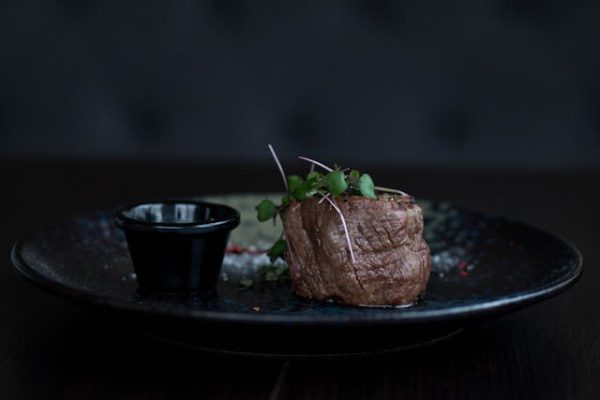
Filet mignon, a hallmark of fine dining and culinary artistry, is celebrated worldwide for its unmatched tenderness and exquisite flavor. As the centerpiece of countless gourmet menus, this luxurious cut of beef continues to captivate chefs and diners alike. But what makes filet mignon so exceptional? Let’s explore its unique appeal, explore its flavor, texture, and versatility in the kitchen. This may just make you ready to place your first online grass fed beef order.
The Origins of Filet Mignon: From Butcher Block to Fine Dining
Understanding filet mignon begins with its origins. Filet mignon, French for “tender fillet” or “dainty filet,” comes from the tenderloin, a small, cylindrical muscle tucked beneath the spine of the cow. This muscle does little work, which accounts for its supreme tenderness. Unlike cuts like ribeye or sirloin, the tenderloin is prized not for its marbling but for its delicate texture and subtle flavor profile.
Historically, filet mignon was a centerpiece of European cuisine, particularly in France, where its preparation often involved rich sauces and refined techniques. In the United States, its reputation blossomed in the mid-20th century as Americans embraced fine dining and steakhouses, cementing its place as a symbol of culinary excellence.
Its rarity also adds to its allure. The tenderloin represents only a small fraction of the cow’s total muscle mass, making filet mignon one of the most expensive cuts. This scarcity, combined with its luxurious mouthfeel, ensures its enduring popularity among connoisseurs.
The Science Behind the Tenderness
Filet mignon’s hallmark tenderness can be attributed to its unique muscle structure. Unlike cuts from weight-bearing muscles, such as the chuck or round, the tenderloin does little heavy lifting. This lack of physical activity means that its muscle fibers remain fine and less dense, resulting in a soft, buttery texture.
In addition to its structure, filet mignon contains minimal connective tissue. Connective tissue, which contributes to toughness in other cuts, is almost entirely absent in this section of the cow. This absence means that filet mignon requires less cooking time and benefits from simple preparations, which preserve its natural qualities.
A crucial aspect of maintaining its tenderness is proper cooking. Overcooking can strip the filet of its delicate qualities, while undercooking may leave the interior overly soft and unappealing. For those looking to explore premium options, Destination Wagyu offers expertly curated selections of filet mignon—the perfect choice for those seeking unparalleled tenderness and flavor.
Flavor Profile: Subtlety Meets Elegance
The flavor of filet mignon is distinct yet understated. Unlike fattier cuts like ribeye, which are prized for their bold, beefy notes, filet mignon’s appeal lies in its subtlety. Its clean, mild flavor serves as a versatile canvas for marinades, rubs, and sauces that elevate its profile without overwhelming it.
This understated nature is particularly appealing to diners who prefer a refined beef flavor. Filet mignon pairs exceptionally well with complementary ingredients, from the earthiness of mushrooms to the richness of truffle butter or a velvety red wine reduction. These pairings enhance the cut’s delicate essence rather than compete with it.
Additionally, the mild flavor of filet mignon allows chefs to experiment with cooking techniques. Grilling, searing, or sous vide methods all bring out its nuanced characteristics, providing a range of culinary experiences while maintaining its inherent elegance.
The Role of Marbling in Filet Mignon
While filet mignon is not known for heavy marbling, the intramuscular fat it does contain plays a crucial role in its texture and flavor. This subtle marbling melts during cooking, infusing the meat with a gentle richness that complements its tender structure.
Comparatively, other cuts like ribeye or strip steak rely heavily on marbling to deliver their robust flavors. Filet mignon’s lower fat content requires precise cooking to prevent dryness while preserving its velvety bite. For those who appreciate leaner cuts without sacrificing tenderness, filet mignon provides a luxurious balance.
In premium grades, such as Wagyu filet mignon, marbling becomes more pronounced. The marbling in Wagyu enhances both flavor and texture, delivering a melt-in-your-mouth experience that sets it apart from standard cuts. This heightened marbling makes Wagyu filet mignon an indulgent choice for special occasions.
Cooking Techniques: Unlocking Filet Mignon’s Potential
Filet mignon’s versatility shines in the kitchen, offering myriad ways to prepare this exquisite cut. Each technique emphasizes different aspects of its texture and flavor, allowing chefs to tailor the experience to their preferences.
Pan-searing is a classic method, creating a golden, caramelized crust that contrasts beautifully with the tender interior. This technique is often complemented by basting the filet with butter, garlic, and herbs, infusing it with additional layers of flavor.
Sous vide, a modern approach, ensures precise temperature control. This method guarantees even cooking, preserving the filet’s tenderness and juiciness. After sous vide, a quick sear locks in the juices and adds a crispy exterior.
For those who prefer grilling, the high heat enhances the natural flavors with a subtle smokiness. Regardless of the method, resting the meat post-cooking is essential, as it allows the juices to redistribute, ensuring every bite is succulent and flavorful.
Pairing Filet Mignon: The Art of Complements
A truly memorable filet mignon experience extends beyond the cut itself, relying on thoughtful accompaniments. Classic pairings, such as creamy mashed potatoes or sautéed asparagus, offer a harmonious balance of flavors and textures that enhance the filet’s delicacy.
For more adventurous palates, bold sauces such as peppercorn demi-glace or blue cheese butter can elevate the dish. Wine pairings are equally critical; a medium-bodied red wine like Pinot Noir or a full-bodied Cabernet Sauvignon provides the perfect counterpoint to the filet’s mild flavor.
Beyond traditional accompaniments, modern chefs often explore global influences. Asian-inspired marinades with soy, ginger, and sesame bring a savory depth, while Mediterranean pairings like olive tapenade or a fresh herb chimichurri add a vibrant contrast.
Why Filet Mignon Remains Timeless
Filet mignon’s enduring appeal lies in its ability to cater to diverse tastes while maintaining its status as a luxury item. Its tender texture, mild flavor, and versatility make it a favorite among both seasoned gourmands and those new to fine dining.
In an era where sustainability and quality are increasingly prioritized, filet mignon offers a mindful indulgence. When sourced from reputable providers, such as premium Wagyu purveyors, diners can enjoy the assurance of ethical practices and unparalleled quality.
Ultimately, filet mignon is more than just a cut of beef; it’s an experience. Whether prepared simply or adorned with elaborate accompaniments, it delivers a culinary journey that epitomizes elegance and refinement.
Filet mignon remains a true testament to the artistry of butchery and the creativity of chefs. Its appeal transcends trends, firmly establishing it as a timeless centerpiece in the world of gastronomy. For those seeking the pinnacle of flavor and texture, this cut is nothing short of perfection.

